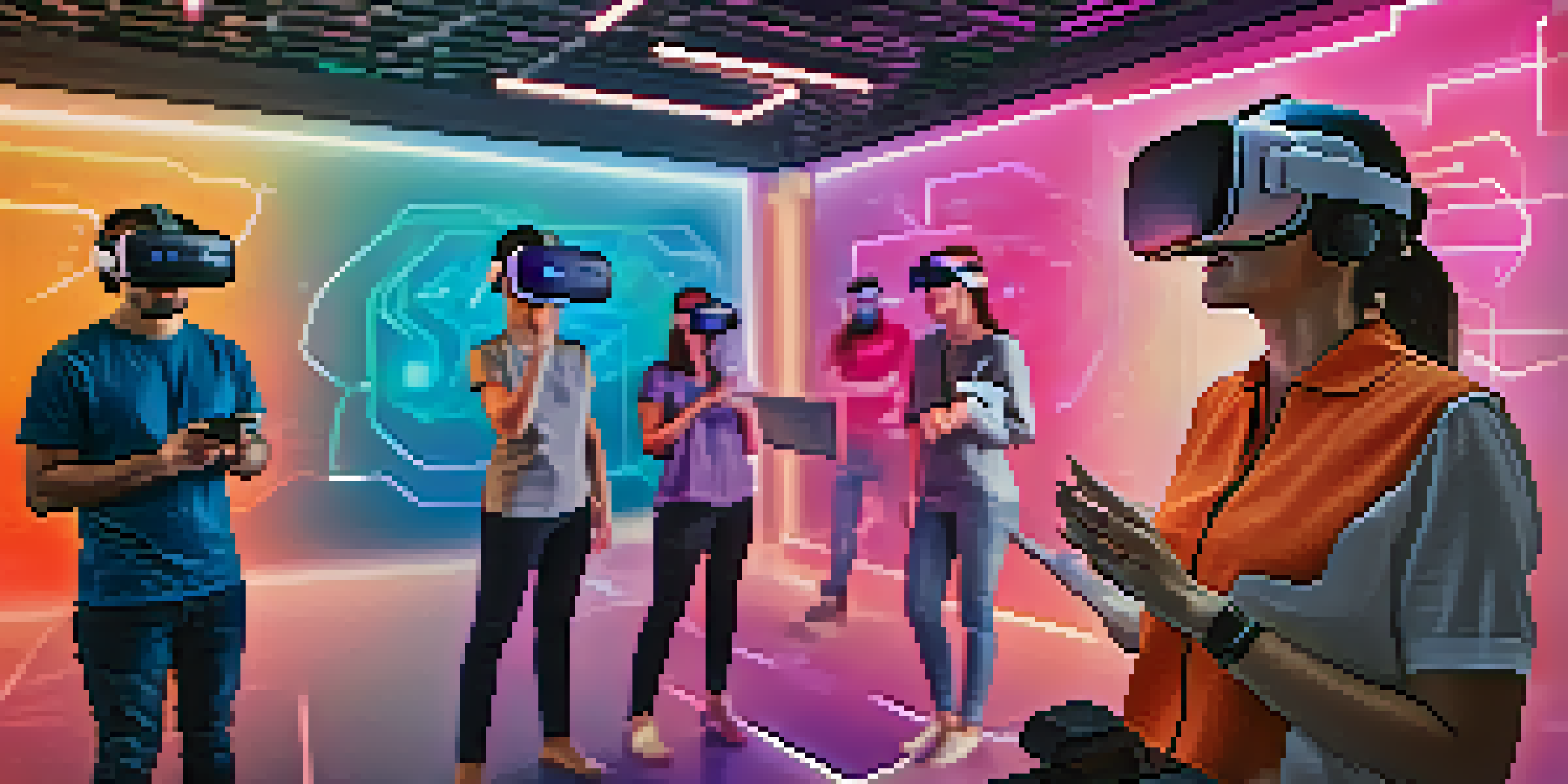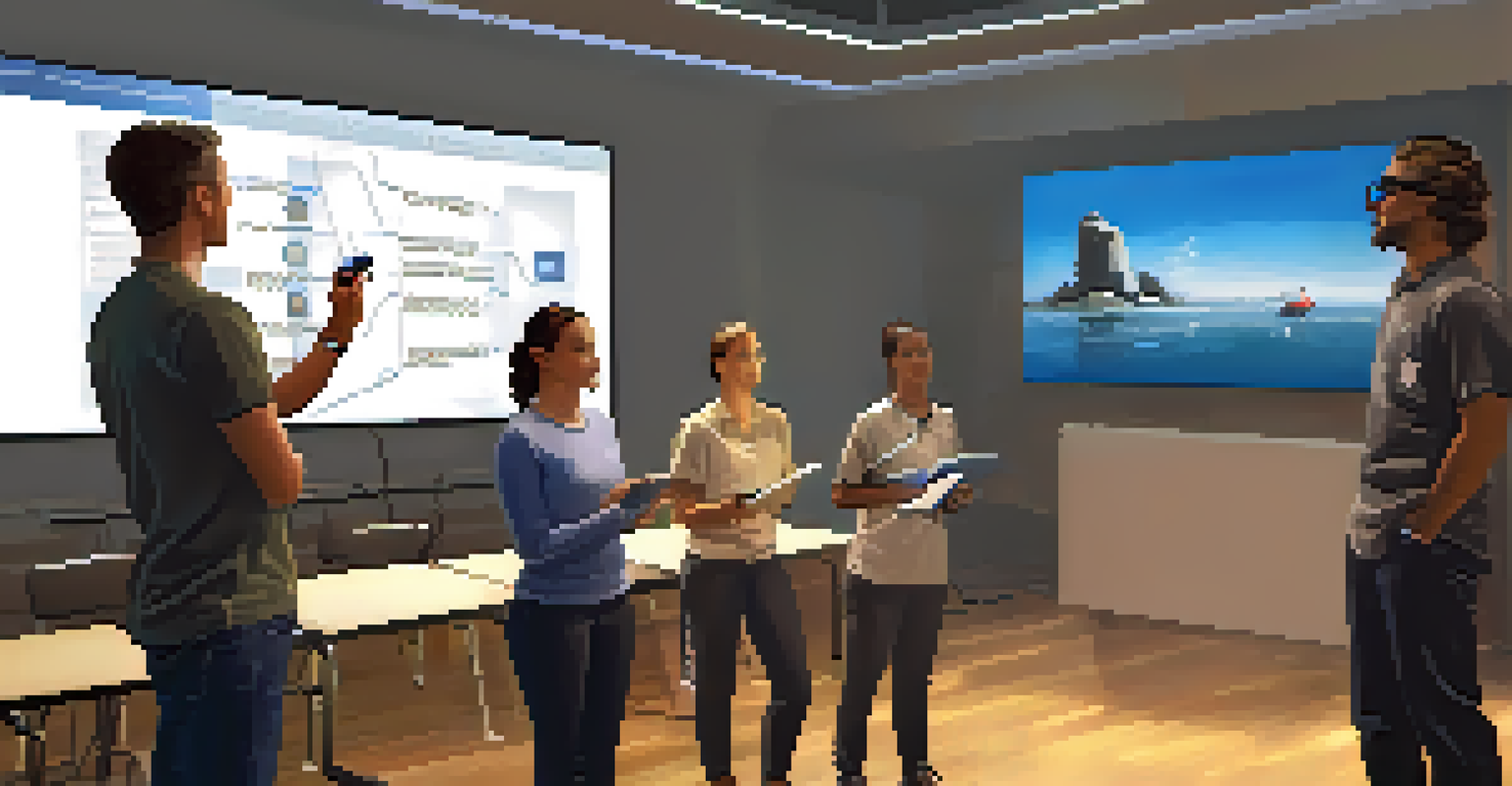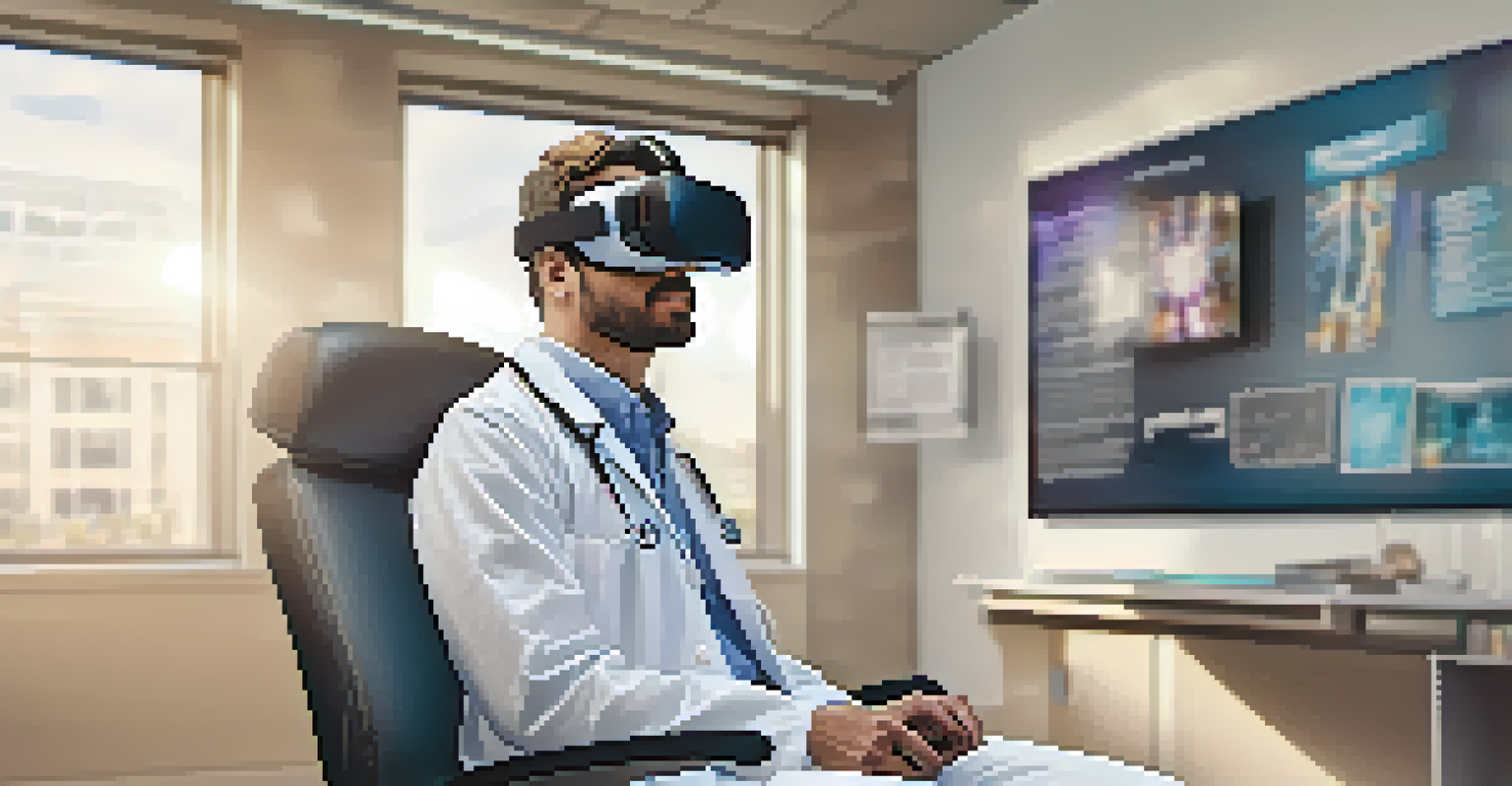Enhancing Communication Skills Through Virtual Reality Training

Understanding the Role of Communication Skills
Communication skills are essential in both personal and professional settings. They help us express our thoughts, share ideas, and connect with others. In an increasingly digital world, the ability to communicate effectively has never been more crucial.
The art of communication is the language of leadership.
Strong communication can lead to better teamwork, enhance relationships, and improve overall productivity. However, many people struggle with aspects like public speaking or active listening. This is where innovative training methods come into play, making learning more engaging and effective.
Virtual Reality (VR) offers a unique platform to practice these skills in a safe, controlled environment. By immersing users in various scenarios, VR can help individuals develop their communication abilities more naturally and confidently.
Why Choose Virtual Reality for Training?
Traditional training methods often lack the interactivity that modern learners crave. In-person workshops can feel intimidating, while online courses may not provide enough hands-on experience. Virtual Reality bridges this gap by offering an engaging and immersive learning experience.

With VR, learners can practice communication skills in realistic settings, whether it's giving a presentation in front of a virtual audience or navigating a difficult conversation. This hands-on practice allows for immediate feedback and adjustment, which is vital for skill development.
VR Enhances Communication Skills
Virtual Reality provides an immersive platform for individuals to develop and practice their communication abilities in realistic scenarios.
Moreover, VR training can be customized to suit individual needs. Whether someone wants to improve their public speaking or enhance their negotiation skills, VR can tailor scenarios to target those specific areas.
The Science Behind VR and Learning
Research shows that immersive experiences can significantly enhance learning retention. When learners engage with material in a dynamic way, they are more likely to remember and apply what they've learned. Virtual Reality taps into this concept by creating memorable, engaging experiences.
Learning never exhausts the mind.
In a VR environment, users can practice real-life situations repeatedly without the fear of judgment. This practice helps in building muscle memory and confidence, making it easier to transfer those skills to the real world.
Furthermore, VR training often incorporates elements of gamification, which makes the learning process enjoyable. When learners are having fun, they're more likely to stay motivated and engaged, leading to better outcomes.
Key Features of VR Communication Training
One of the standout features of VR training is its ability to simulate various social scenarios. Users can encounter different personalities and communication styles, which prepares them for real-world interactions. This exposure is crucial for developing adaptability in communication.
Another feature is the instant feedback mechanism built into many VR programs. After completing a scenario, users can receive insights into their performance, including areas for improvement. This timely feedback helps learners make adjustments and grow quickly.
Interactive Learning with VR
Unlike traditional training methods, VR offers engaging and hands-on experiences that allow learners to receive instant feedback and adjust their skills.
Additionally, VR can track user progress over time, allowing individuals to see how their skills have evolved. This progress tracking not only boosts motivation but also provides a clear path for continued improvement.
Real-World Applications of VR Training
The applications of VR communication training are vast and varied. Businesses are using VR to train employees in customer service, sales, and conflict resolution, all of which require strong communication skills. This training approach can lead to improved customer satisfaction and higher sales.
Educational institutions are also embracing VR as a tool to enhance communication among students. By simulating group projects or debates in a virtual space, students can practice teamwork and persuasive speaking in an engaging manner.
Even healthcare providers are turning to VR for training purposes. Medical professionals can practice patient interactions, delivering bad news, or discussing treatment plans in a safe environment, ultimately leading to better patient care.
Overcoming Challenges with VR Training
While VR communication training offers numerous benefits, there are challenges to consider. One major concern is accessibility; not everyone has access to VR technology. However, as the technology becomes more affordable, this barrier is gradually diminishing.
Another challenge is the potential for motion sickness or discomfort during VR experiences. Developers are continuously working to create more comfortable and user-friendly environments to minimize these issues. User feedback is crucial in this process.
Future of Training is VR
As technology advances, the integration of VR in communication skills training is expected to grow, providing personalized and adaptive learning experiences.
Finally, it's important for organizations to ensure that VR training complements existing training methods. Blending VR with traditional approaches can create a more comprehensive learning experience, catering to different learning styles.
The Future of Communication Skills Training
As technology evolves, the potential for VR in communication training is immense. The future may see even more advanced simulations that incorporate artificial intelligence, allowing for more personalized learning experiences. This could revolutionize how we approach skill development.
Imagine a scenario where VR can adapt in real-time to a learner's progress, offering increasingly challenging situations as they improve. This level of customization could lead to even greater mastery of communication skills, preparing individuals for any situation they may face.

In the coming years, we can expect to see VR training becoming a standard practice in various fields. As more organizations recognize the value of effective communication, the demand for innovative training solutions like VR will only continue to grow.